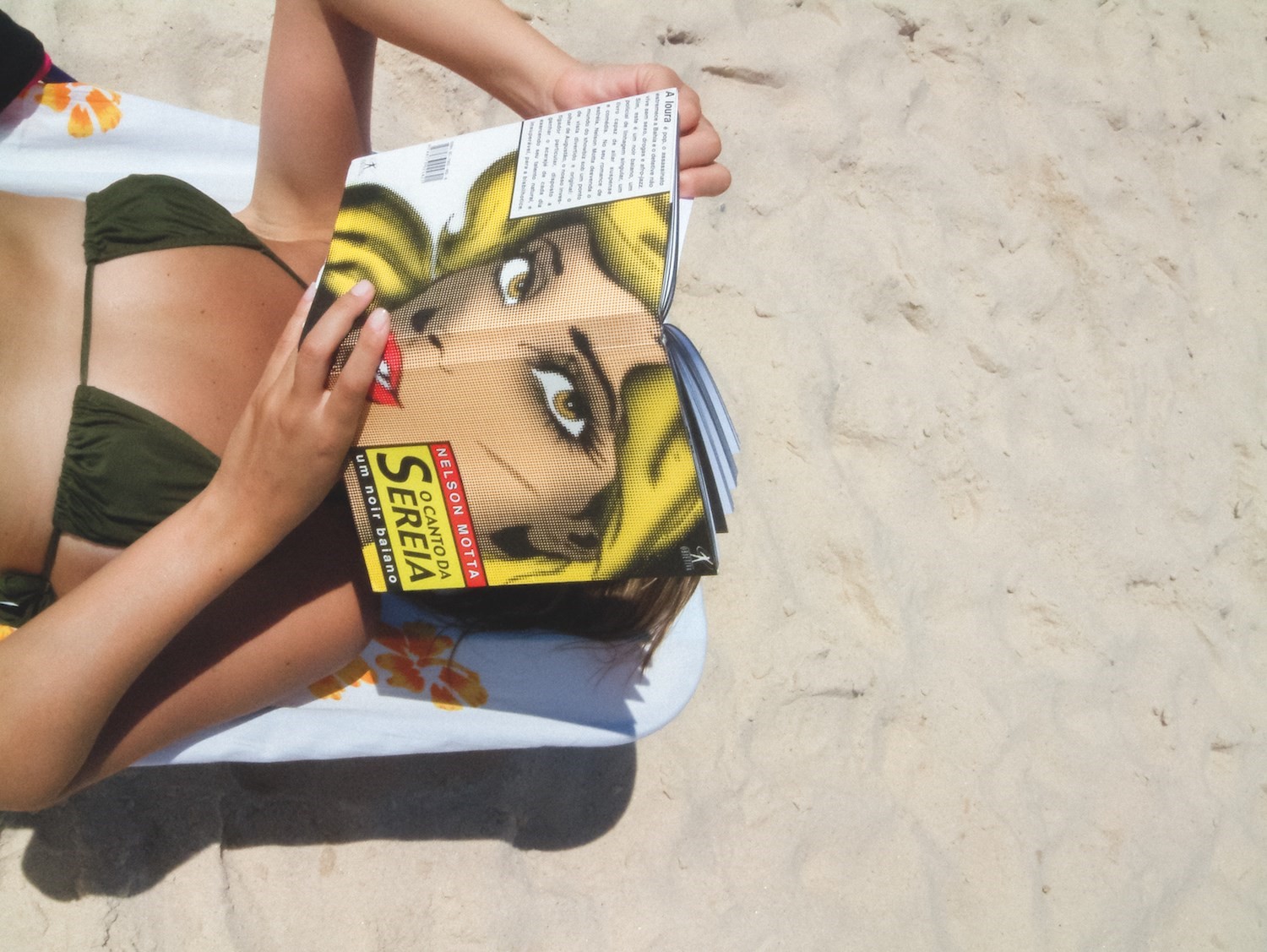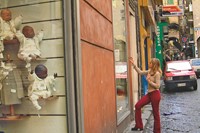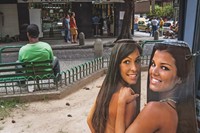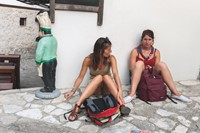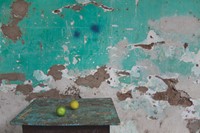Feted American photographer Charles H. Traub is not a fan of labels. “I hate the term street photographer,” he says vehemently, but with a kind chuckle, over the phone from his New York office. “I think it’s a very stupid term because it sounds like everything is done on the street. I can make a picture in my office, in my bedroom, anywhere I want to.” Traub is, of course, widely known for photographs he has captured on the street – including his evocative, sun-drenched series Dolce Via, taken on the streets of Italy during the 80s, and his wonderful earlier series, Lunchtime, comprising close-up colour portraits of people he encountered on his lunch breaks in both Chicago (the city where he studied and spent the early part of his career) and New York (where he moved in the late 70s).
These snaps are utterly joyful – Traub has a marvellous eye for characters, and a clear knack for making his subjects feel comfortable enough to reveal something truthful of themselves before his lens, regardless of their age or status. (“I think if you’re respectful and your intentions are sincere and you present yourself forthrightly, it’s pretty easy to photograph almost anyone or anything,” he says of this skill.) You’d be tempted to point out the images’ candour, but beware: Traub shirks the term “candid photographer” too. He prefers to employ his own terminology and describes himself as a “real world witness”. This could sound pretentious, but, when uttered by the cheerful yet earnest image-maker, who has spent more than 50 years honing his practice, simply attests to a refined appreciation for the thousands of coincidental combinations – of people, places, things – that whizz past us each day at lightning speed, and the ways in which his camera allows him to collect them, like a butterfly catcher with a net.
In particular, Traub has always been attracted to capturing life’s small absurdities – the way perspective might make it appear that two people with some distance between them are standing nose to nose, for instance, or how a well-placed book cover sporting a face could appear to merge with its reader. “I had a whole group of pictures which I took in Chicago, and some in New York, that I called ‘the funnies’,” he recalls. “They’re just ironic, funny little juxtapositions, things that are kind of out of place, if you will.” This enduring fascination has most recently culminated in his latest book, a series of pictures he has dubbed “taradiddles”, taken digitally in the 2000s and 2010s (Traub ditched analogue for digital in 1998 and never looked back) in various locations around the globe.
“A taradiddle is a little white lie; a little provocation, maybe; a deception,” the photographer expands on the whimsical word, which also serves as the book’s title. “And these pictures are really about the act of making a photograph, which takes something inevitable out of context. I think John Berger said, ‘A drawing is a translation, a photograph is a quotation’. And I would add to that: a photograph is a quotation, but it’s always out of context,” he laughs. “So therefore there’s an implied lie or contextual misunderstanding or, who knows, maybe it’s the right understanding!” A peruse through Taradiddle’s high-gloss pages reveals exactly what he means. A tree, with two gift bags inexplicably nailed to it, is cast in a new anthropomorphic light when you notice the lady walking behind it, carrying a similar shaped bag under her arm: suddenly the trunk transforms from unnatural host to fellow shopper. A brown but fairly innocuous splatter on a white wall, meanwhile, takes on unpleasant connotations courtesy of a sign positioned above it showing a squatting lady, underwear halfway down, with a big, red forbidding line across it.
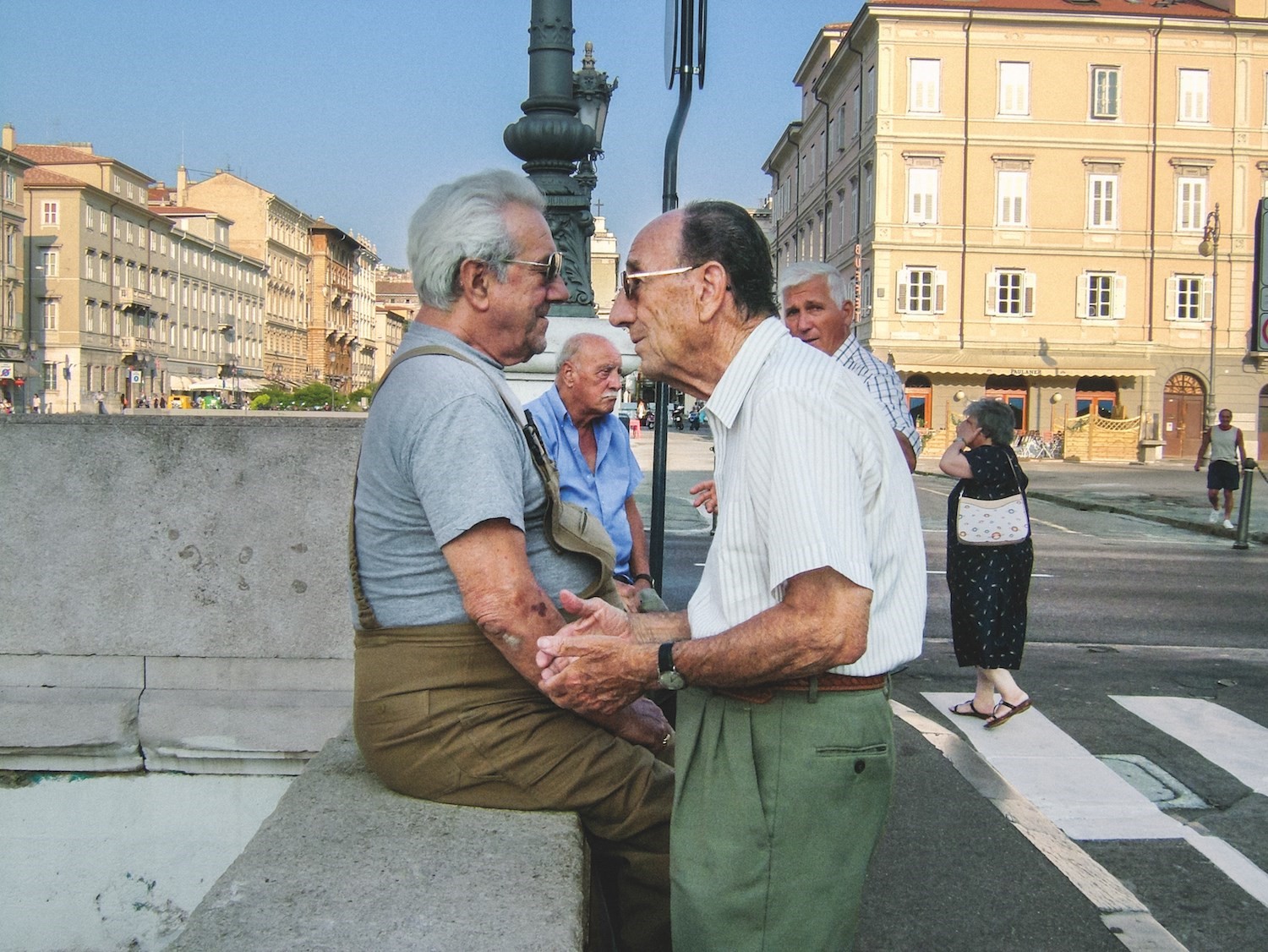
Some of the pictures are works of complete perfection when viewed alone: a vast billboard bearing an Evian advert of a winged angel pouring water down onto the street below demonstrates Traub’s inimitable propensity for timing, colliding as it does with an unsuspecting passerby, his curly head positioned directly under the stream of water, his fluffy beard blending with the angel’s cloud behind it. (“You know when you got the picture,” Traub chuckles gleefully, when I compliment the shot. “You know when you have what Garry Winogrand once called a ‘zinger’. It’s a high. It’s the gift that all your practice, work and deliberation gives back to you.”) Other works Traub invites us to view as a pair: a couple of cardboard cut-out women, snapped to the right of a man in a green T-shirt with his back towards the viewer, find an ideal pendant in an accompanying picture of a chef figurine – also in a green top, seen from behind – with two young women sitting to his right.
Taradiddle’s images frequently offer up a commentary on modern society, from what Traub describes as “the ways in which everyone else’s image intrudes upon on our own image, on our space – whether it’s through a TV screen, our cell phone, a billboard or an ad on a car” to our immunity to violence, seen through images of children playfully interacting with guns and tanks, while adults stand by utterly unphased. “I think the older you get, the more practiced you get, the more in tune with your feelings and the nature of your view of the world you become – from a social, political, ethical, moral way,” Traub remarks on the subject. “Things are going to capture your attention because of who you are, what you’ve learned, what you’ve seen and what you’ve done, and a book is a great way to present the work, because it allows a narrative arc. I believe that a body of work has a synergistic truth greater than the sum of its parts.”
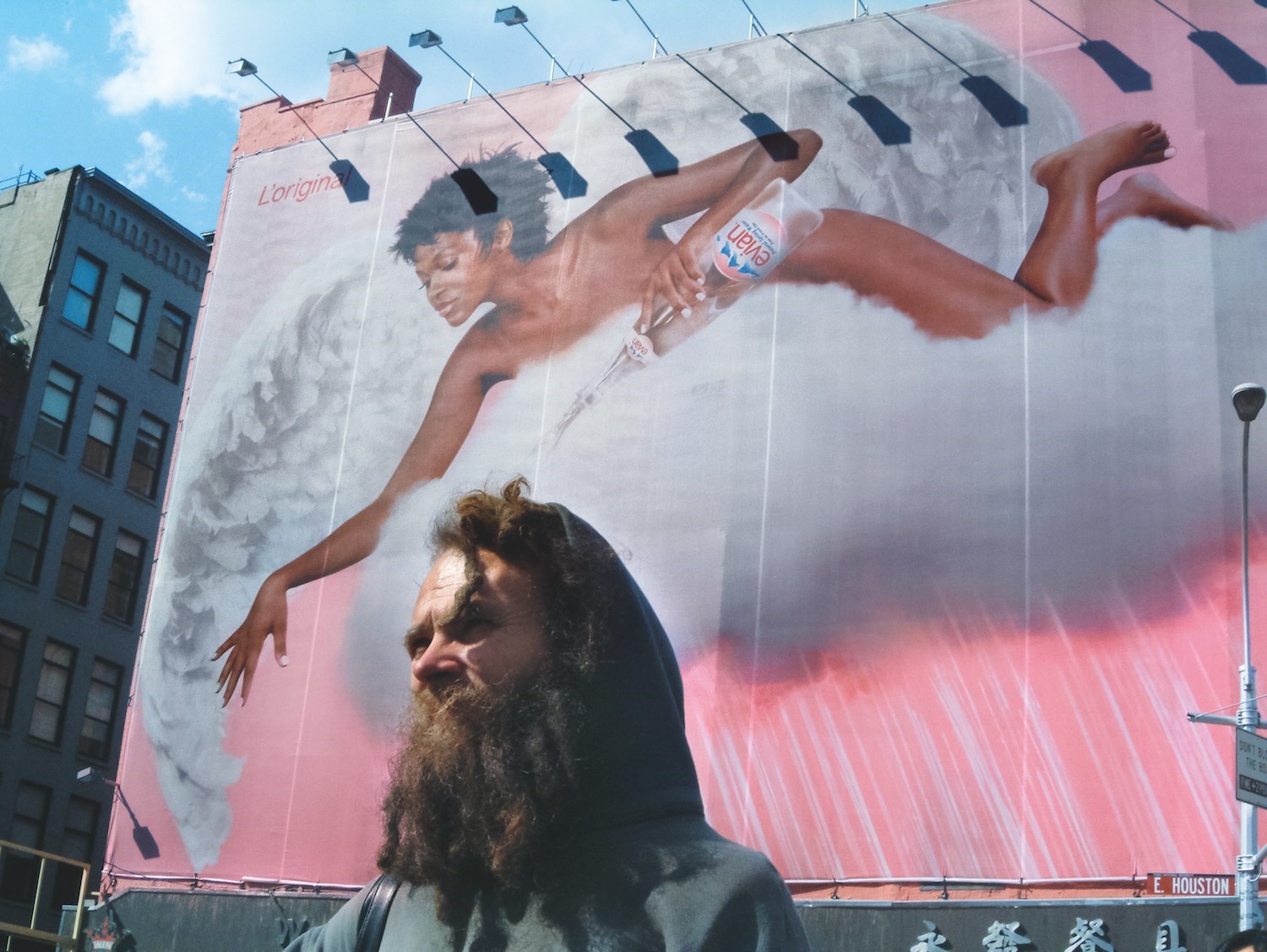
It’s undeniable that all the taradiddles, when viewed together, serve to represent a singular, esoteric view of the world – one that’s not always easy to put into words. Soon your eye starts becoming attuned to Traub’s way of looking at scenarios and subjects, plucking out the juxtapositions he’s placing before us: how two apples on a table mirror the two round marks on the wall behind them, or why the shot of a woman in a black-and-white polka dot top in the same frame as a dalmation is so particularly visually pleasing. As the image-maker himself notes sagely, “photography is a wonderful way of projecting yourself upon everything else in the world”.
The book is an exercise in finding what small but significant coincidences are all around us if we only look and – moreover – in the unparalleled, almost mystical power of the camera and its wielder to document them. In our fake news era, when what is real and what is not feels less certain than ever, Traub’s tongue-in-cheek taradiddles – which, he says intently, are never staged – feel like a pertinent antidote. “There’s this quote by the late great writer James Salter that goes, ‘There comes a time when you realise that everything is a dream, and only those things preserved in writing have any possibility of being real’,” Traub says as our conversation draws to a close, “which prompted me to riff on it on by substituting the word ‘writing’ to ‘photographing’. That’s what happens with photographing too – the truth is in the making of the pictures.”
Taradiddle is out now, published by Damiani.
